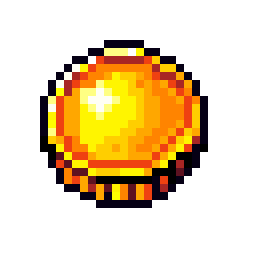Eerie Double Skull Skeleton: Macabre Retro Art
This pixel art depicts a stark, monochromatic skeleton with a second skull emerging from its head, creating an eerie and macabre image. The retro style and unusual anatomy evoke a sense of decay and otherworldly existence.
Read More
The pixel art image depicts a stylized, upper-torso skeleton, featuring a prominent detail of a second skull seemingly splitting or emerging from its main head. The primary skull is positioned facing slightly to the viewer's left, with an open mouth displaying pixelated teeth. The second skull appears to be fused with or emerging from the upper right side of the main skull, angled slightly downward and to the viewer's right, also with an open mouth. The neck, spinal column, and a portion of the rib cage are visible, with the clavicle and shoulder areas hinted at. The skeleton's posture is upright but with a subtle tilt in the neck, suggesting a slight dynamic quality despite its static nature.
The subject is centrally located within the frame, occupying a significant portion of the vertical space and a good width. The framing is tight, focusing almost exclusively on the skeleton's upper body. There is no discernible background or environment; the subject is set against a solid, untextured black void, making it the sole focal point.
The color palette is strictly monochromatic, consisting primarily of black and white. Various shades of grey are utilized to create depth, shading, and detail on the bone structures, ranging from very light grey to dark grey. The overall color scheme is stark and high-contrast, emphasizing the skeletal form against the dark background.
The overall vibe and mood evoked by the image are somewhat eerie and unsettling due to the skeletal nature and the unusual double-skull feature. It possesses a macabre aesthetic, potentially hinting at themes of decay, death, or perhaps a surreal, otherworldly existence. Despite the morbid subject, the pixel art style lends it a certain nostalgic, retro gaming quality. There are no additional details, text, or UI elements present; the image is a focused depiction of the skeletal subject.
 10
10
